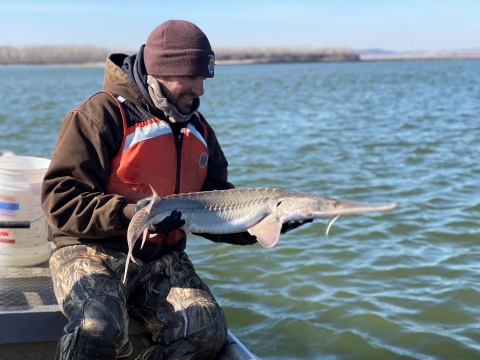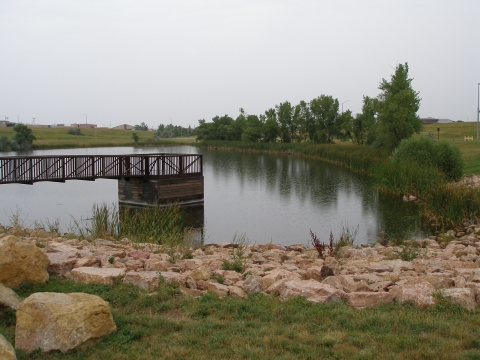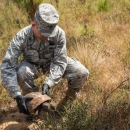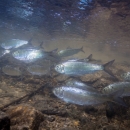Management and Conservation
The Great Plains FWCO monitors pallid sturgeon in the Missouri River from Fort Randall Dam, South Dakota, to Lewis and Clark Lake, Nebraska and South Dakota, as part of the collaborative, multi-agency Pallid Sturgeon Population Assessment Program. The Pallid Sturgeon Population Assessment Program is funded by the U.S. Army Corps of Engineers and provides valuable information on the effects of management actions (e.g., stocking and habitat manipulation) on the pallid sturgeon population and the Missouri River ecosystem. We also actively participate in the Middle and Upper Basin Pallid Sturgeon Workgroups to help guide recovery efforts.
Our Services
We help the Department of Defense protect and conserve fish and wildlife resources at Offutt Air Force Base, Nebraska, and Ellsworth Air Force Base, South Dakota. We assist to implement the Integrated Natural Resources Management Plan for each installation by evaluating potential impacts of military activities on fish and wildlife, ensuring that important habitat is maintained, identifying recreation and conservation opportunities such as hunting and fishing, providing information for invasive species invasive species
An invasive species is any plant or animal that has spread or been introduced into a new area where they are, or could, cause harm to the environment, economy, or human, animal, or plant health. Their unwelcome presence can destroy ecosystems and cost millions of dollars.
Learn more about invasive species management, and managing wildlife to support the safety and operational effectiveness at each base.
The Great Plains FWCO also provides technical fisheries assistance to Native American Tribes in South Dakota, Nebraska, and Kansas. We assist Tribes to manage their recreational fisheries by conducting fisheries surveys, providing management recommendations, and coordinating fish stocking requests through the federal hatchery system.
Our Projects and Research
The Great Plains FWCO, in cooperation with South Dakota Department of Game, Fish, and Parks, is conducting an acoustic telemetry in Lake Sharpe, South Dakota, to understand habitat use, movements, emigration, and survival of stocked paddlefish. This information will aid in restoring this native species to this segment of the Missouri River and to help determine the feasibility of creating a recreational fishery for paddlefish in Lake Sharpe.
The Great Plains FWCO also provides expertise and identification of the aquatic nuisance species, Didymosphenia geminata, commonly known as “didymo” or “rock snot.” Our laboratory accepts samples of suspected didymo for the purpose of identifying and verifying the diatom. We can also answer questions regarding didymo ecology and its interaction with aquatic resources.





